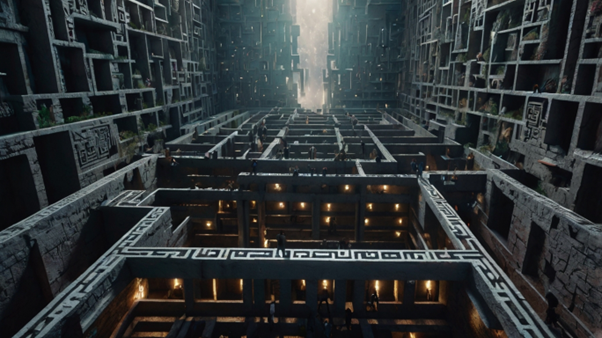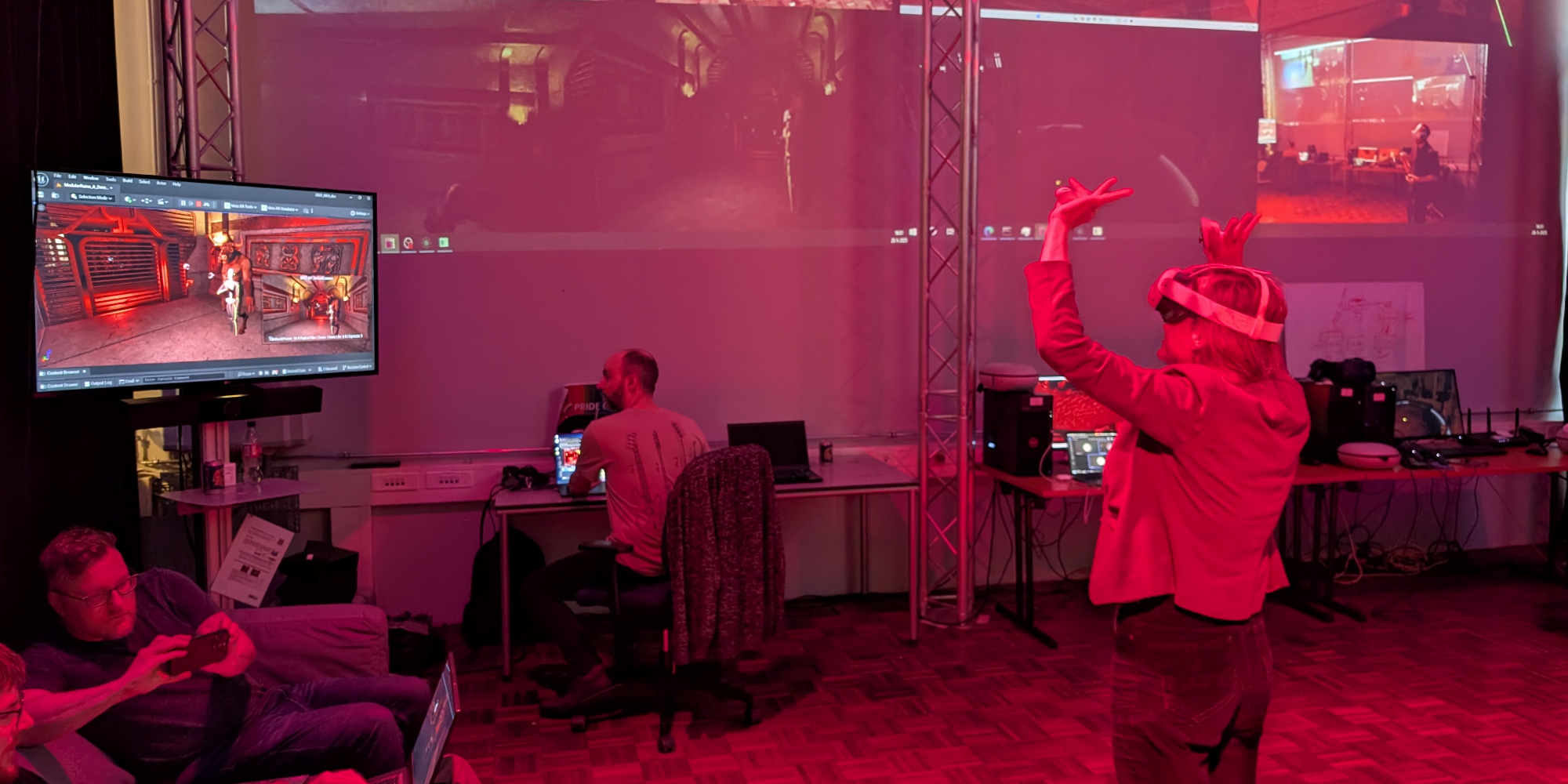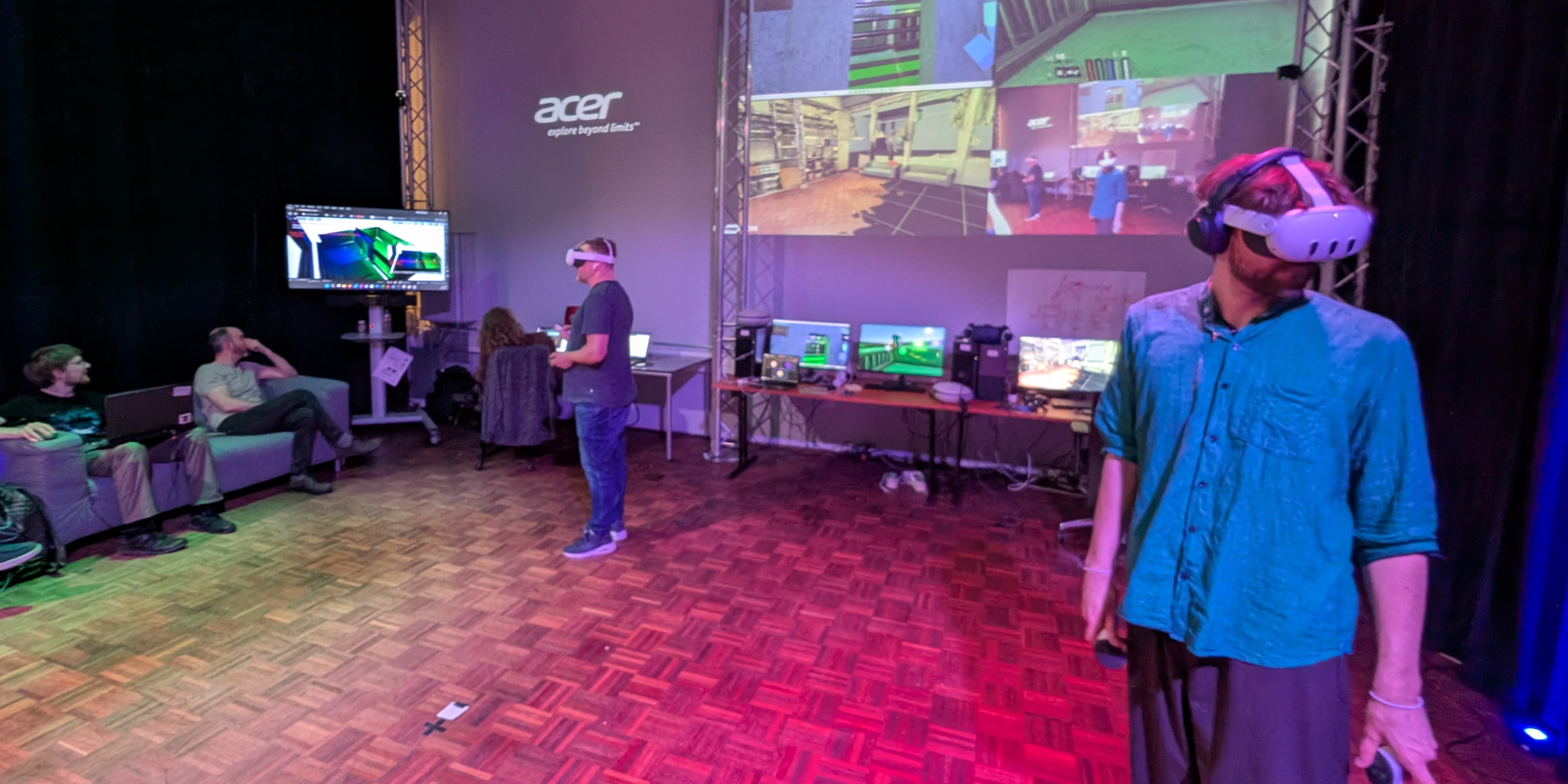At AXR Lab, we are exploring how immersive technologies can extend collaborative creation beyond a single physical site. Our Co-Located XR Project connects physically distant studios through hybrid environments where spatial storytelling, embodied interaction, and real-time world-building come together.
These projects combine physical spaces, networked XR platforms, and performance-driven design to prototype new forms of shared presence, where people can move, create, and experience together even when apart. Our setups often involve integrated technologies like real-time 3D engines, motion tracking, multi-user VR environments, and theatrical tools like lighting and spatial sound.
This research trajectory is not just about technical innovation; it is also about rethinking how we inhabit digital space; how we create rituals of connection, choreograph shared agency, and stage new kinds of encounters in hybrid realities.
Case Study: The Interdimensional Labyrinth
A collaboration between HKU AXR Lab & Design Academy Eindhoven’s Trans Realities Lab
In this experimental co-located XR project, we reimagine the mythical Minotaur’s labyrinth as a performative, multi-layered mixed reality experience. Spanning two physical sites, this immersive collaboration merges theatrical design, social VR, and virtual production into one interconnected labyrinthine world.
Four Interwoven Dimensions:
- Unreal Engine Labyrinth: A high-fidelity VR space where players try to navigate, connected in real-time across labs.
- Resonite : A mutable design layer where remote designers can reshape the world as it’s being explored.
- Physical Spaces: Labs outfitted with projection, sound, and motion tracking, turning real rooms into performative extensions of the virtual labyrinth.
- Broadcast Layer (optional): Live camera feeds from both spaces can be edited and streamed to online audiences, offering a window into the hybrid performance.
Core Themes & Innovations:
- Embodied Collaboration: How can bodies move together in fragmented, networked spaces?
- Agency & Spatial Play: Players interact not just within VR, but influence the shape of the labyrinth as it evolves.
- AI as Co-Creator: We explore how spatially-aware AI can act as guide, Minotaur, or world-builder, learning from participant behavior and co-shaping the experience.
- Theatrical Systems Integration: Using DMX/OSC protocols, lighting and sound systems respond dynamically to virtual events, turning the labyrinth into a living stage.
This project not only demonstrates technical capabilities, but also raises poetic and philosophical questions about how we navigate distance, collaboration, and transformation in the digital age.


